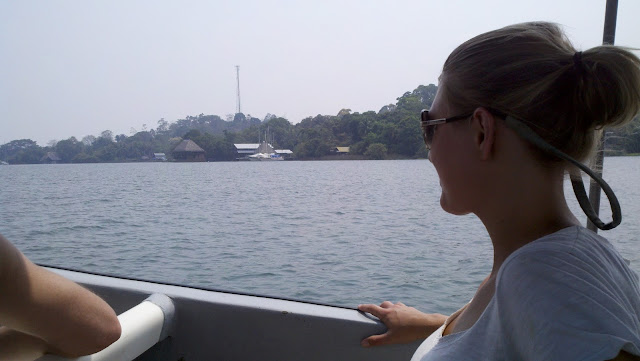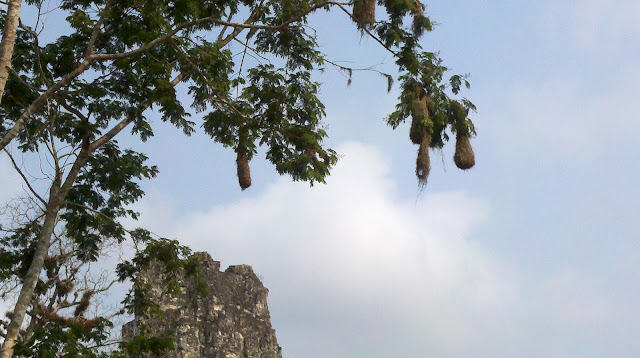Semuc Champey
Semuc Champey (Sacred Water in the Mayan language) is a natural monument in Guatemala which consists of a 300 meter limestone bridge, under which passes the Cahabon River. On top of the bridge are a series of beautiful turquoise pools which were perfect for swimming. In some places the pools were deep and we were able to dive from the ledge of one pool into the pool below and it also boasts a natural rock water slide.
 |
| The Cahabon River before it goes underground. |
 |
| The river going underground. |
 |
| The pools atop the limestone bridge. |
 |
| Water flowing from the pools into the river below. |
 |
| The river below the pools |
Link to video of the river and pools:
Views of the river and landscape from our hike to the famous blue pools of Semuc Champey
Around our lodge in Semuc Champey
In addition to very aggressive ants and the perfect spot for bathing in the river, our lodge also had some beautiful scenery including a view of the mountains, the river, enormous cacao plants and persistent trees. Locals make delicious chocolate, including varieties with cardmom, which is also grown in this region.

















































